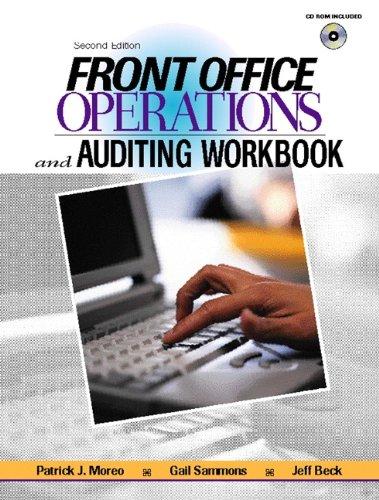Question
Integrative Case 9-63 Distortions Caused by Inappropriate Overhead Allocation Base (LO 9-1, 3, 5, 6) Chocolate Bars, Inc. (CBI), manufactures creamy deluxe chocolate candy bars.
Integrative Case 9-63 Distortions Caused by Inappropriate Overhead Allocation Base (LO 9-1, 3, 5, 6)
Chocolate Bars, Inc. (CBI), manufactures creamy deluxe chocolate candy bars. The firm has developed three distinct products: Almond Dream, Krispy Krackle, and Creamy Crunch.
CBI is profitable, but management is quite concerned about the profitability of each product and the product costing methods currently employed. In particular, management questions whether the overhead allocation base of direct labor-hours accurately reflects the costs incurred during the production process of each product.
In reviewing cost reports with the marketing manager, Steve Hoffman, who is the cost accountant, notices that Creamy Crunch appears exceptionally profitable and that Almond Dream appears to be produced at a loss. This surprises both him and the manager, and after much discussion, they are convinced that the cost accounting system is at fault and that Almond Dream is performing very well at the current market price.
Steve decides to hire Jean Sharpe, a management consultant, to study the firms cost system over the next month and present her findings and recommendations to senior management. Her objective is to identify and demonstrate how the cost accounting system might be distorting the firms product costs.
Jean begins her study by gathering information and documenting the existing cost accounting system. It is rather simplistic, using a single overhead allocation basedirect labor-hoursto calculate and apply overhead rates to all products. The rate is calculated by summing variable and fixed overhead costs and then dividing the result by the number of direct labor-hours. The product cost is determined by multiplying the number of direct labor-hours required to manufacture the product by the overhead rate and adding this amount to the direct labor and direct material costs.
CBI engages in two distinct production processes for each product. Process 1 is labor intensive, using a high proportion of direct materials and labor. Process 2 uses special packing equipment that wraps each individual candy bar and then packs it into a box of 24 bars. The boxes are then packaged into cases, each of which has six boxes. Special packing equipment is used on all three products and has a monthly capacity of 3,000 cases, each containing 144 candy bars (= 6 boxes 24 bars).
To illustrate the source of the distortions to senior management, Jean collects the cost data for the three products, Almond Dream, Krispy Krackle, and Creamy Crunch.
CBI recently adopted a general policy to discontinue all products whose gross profit margin percentages [(Gross margin Selling price) 100] were less than 10 percent. By comparing the selling prices to the firms costs and then calculating the gross margin percentages, Jean could determine which products, under the current cost system, should be dropped. The current selling prices of Almond Dream, Krispy Krackle, and Creamy Crunch are $85, $55, and $35 per case, respectively. Overhead will remain $69,500 per month under all alternatives.
| Almond Dream | Krispy Krackle | Creamy Crunch | ||||
| Product costs | ||||||
| Labor-hours per case | 7 | 3 | 1 | |||
| Total cases produced | 1,000 | 1,000 | 1,000 | |||
| Material cost per case | $ | 8 | $ | 2 | $ | 9 |
| Direct labor cost per case | $ | 42 | $ | 18 | $ | 6 |
| Labor-hours per product | 7,000 | 3,000 | 1,000 | |||
| Total overhead = $69,500 | ||||||
| Total labor-hours = 11,000 | ||||||
| Direct labor costs per hour = $6 | ||||||
| Allocation rate per labor-hour = (a). | ||||||
| Costs of products | ||||||
| Material cost per case | $ | 8 | $ | 2 | $ | 9 |
| Direct labor cost per case | 42 | 18 | 6 | |||
| Allocated overhead per case(to be computed) | (b) | (c) | (d) | |||
| Product cost | (e) | (f) | (g) | |||
|
| ||||||
Step by Step Solution
There are 3 Steps involved in it
Step: 1

Get Instant Access to Expert-Tailored Solutions
See step-by-step solutions with expert insights and AI powered tools for academic success
Step: 2

Step: 3

Ace Your Homework with AI
Get the answers you need in no time with our AI-driven, step-by-step assistance
Get Started





